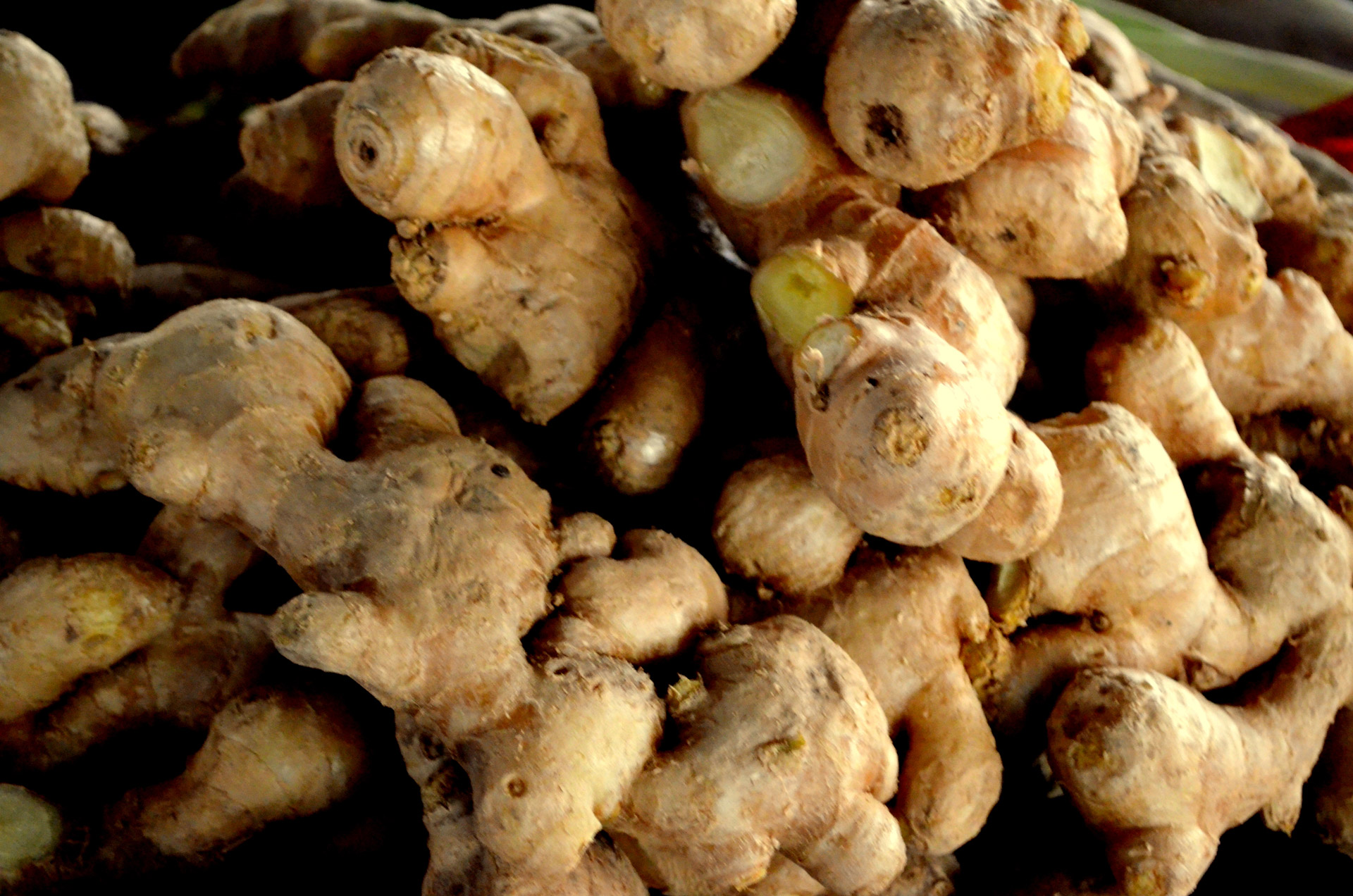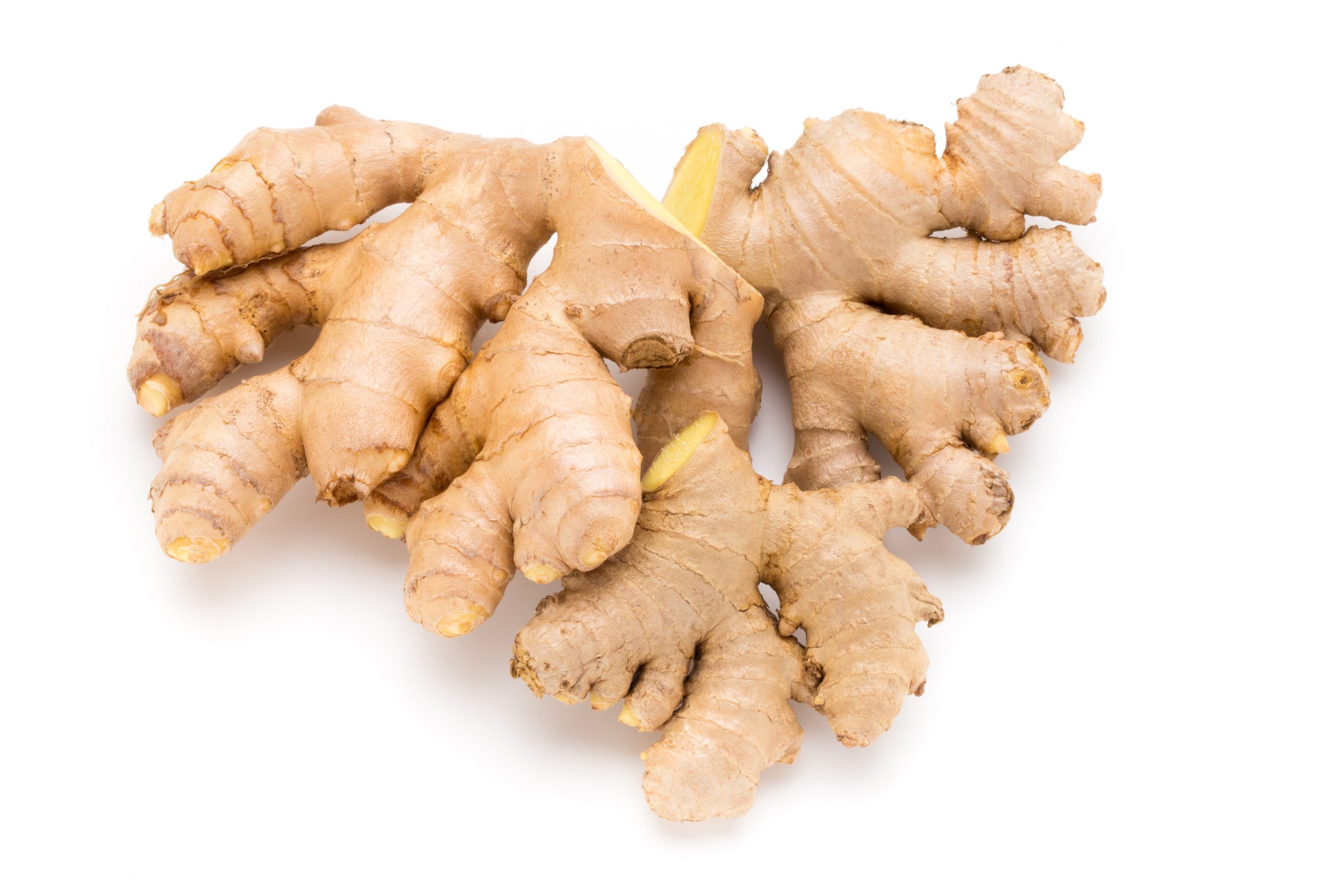
These uncomplicated cookies have a very addictive quality in that the sweet flavor of candied ginger keeps you wanting more. For this reason it’s best to lay down some parchment paper under the cookies so that you don’t end up scraping up melted sugar from your cookie sheets. The last step before popping these cookies into the oven is to sprinkle some turbinado sugar on top.

To form the cookies you’ll need roll them into balls then gently flatten them on the cookie sheet. Don’t be alarmed! This is how it’s supposed to look. To make these cookies you’re essentially making a shortbread recipe and so the dough is extremely crumbly like a pie crust. It’s a really special cookie! And, as you might expect they are divine when enjoyed with a cup of hot tea of your choice. But, then when you bite down on a piece of that chewy candied ginger the texture totally changes. When you first bite into one of these stem ginger cookies you get a very crisp texture. Well, now you can make theses truly fabulous cookies at home. These crispy-yet-chewy treats are a staple cookie (or “biscuit” as they say across the pond) in England and Ireland and if you’ve ever had the imported versions then you know how delicious they are. After harvest, the ginger should be cured for 3 to 5 days to prevent the development of mildew on the rhizomes.If you love ginger then have I got a recipe for you! In the UK candied ginger is called “stem ginger” and these cookies use this tasty ingredient as one of the main flavors. Commercially produced ginger is harvested with the use of cutter bar which is pulled by a tractor. Ginger is usually harvested after the leaves senesce, dry out and the stem falls over. Side dressings should be made every 2 to 3 weeks during the growing season to ensure the ginger is suppied with adequate nutrients. The side dressing should be made 25 to 30 cm (10-12 in) from the row of plants due to ginger being easily damaged by fertilizer applications. During the growing season, additional fertilizer can be applied as a side dressing. 2 It is a herbaceous perennial which grows annual pseudostems (false stems made of the rolled bases of leaves) about one meter tall bearing narrow leaf blades. Ginger will benefit from the addition of a complete fertilizer as well as phosphorous, calcium and organic matter prior to planting. Ginger Ginger ( Zingiber officinale) is a flowering plant whose rhizome, ginger root or ginger, is widely used as a spice and a folk medicine. Any exposed rhizomes should be covered with soil and weeds should be removed from the bed. Soil should be hilled 3 to 5 times during the growing season. Ginger has a tendency to grow horizontally and the soil can be hilled around the growing stems to force a more vertical growth habit. For optimal growth, the soil temperature at planting should not fall below 25☌ (77☏). The sets should then be planted in early Spring at a depth of 5–12 cm, leaving 15–35 cm between plants and 25–30 cm between rows. Lime should be added to the soil in appropriate amounts in the Fall prior to planting.


The addition of lime to the soil adjusts the pH while helping to provide the calcium required by the plants during their growth. The bed should be prepared for planting by digging to soil to a fine tilth and removing any weeds that are present. The ginger sets can be pre-sprouted in pots or nursery seed beds by covering with a layer of soil or they can be planted directly at the final planting location. Each piece should possess at least one living bud which will produce shoots. Sets are produced by cutting a small 3–6 cm from a living rhizome. Ginger is vegetatively propagated from small sections of the rhizome, called sets. Ginger plants will not tolerate waterlogged soils. Ginger plants require an average annual rainfall of between 250 and 300 cm for optimal growth and development and require additional irrigation where rainfall is not adequate. The optimum soil pH for growth of ginger is between 6.0 and 6.5 and the plant requires a minimum temperature of 15.5☌ (59.9☏). As a tropical plant, ginger grows best in warm and sunny climates in a deep but well draining soil loam that is high in organic matter.


 0 kommentar(er)
0 kommentar(er)
